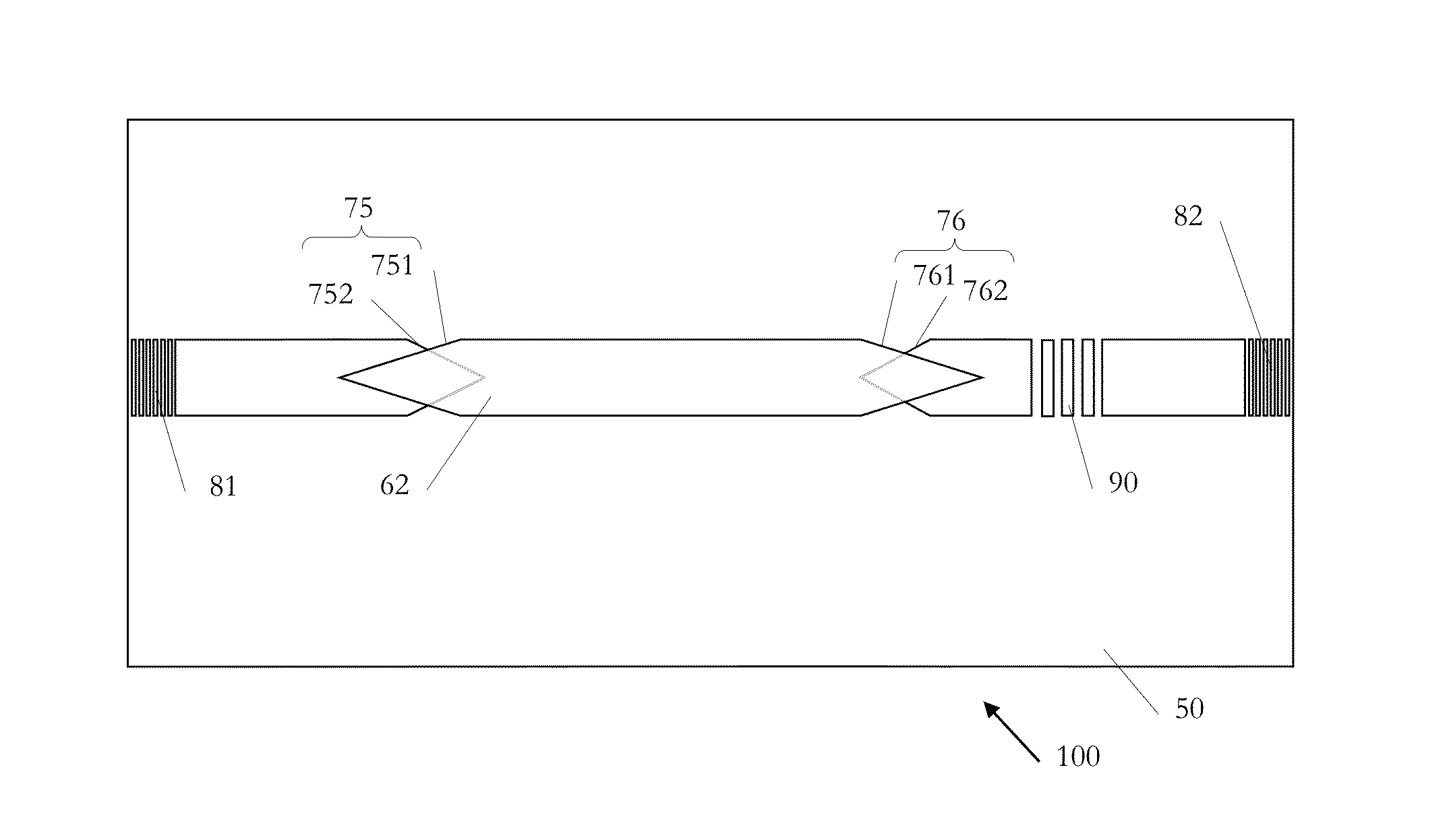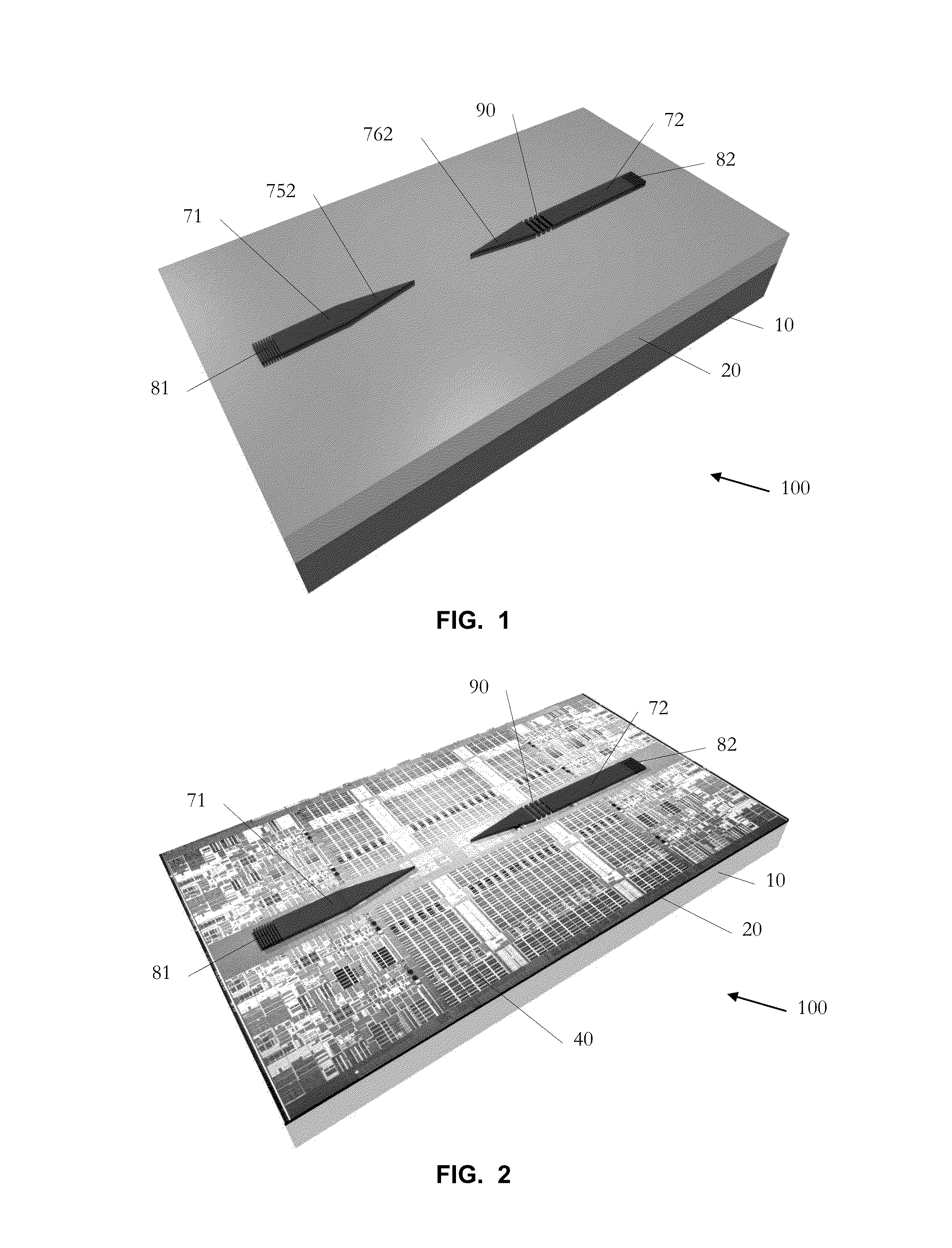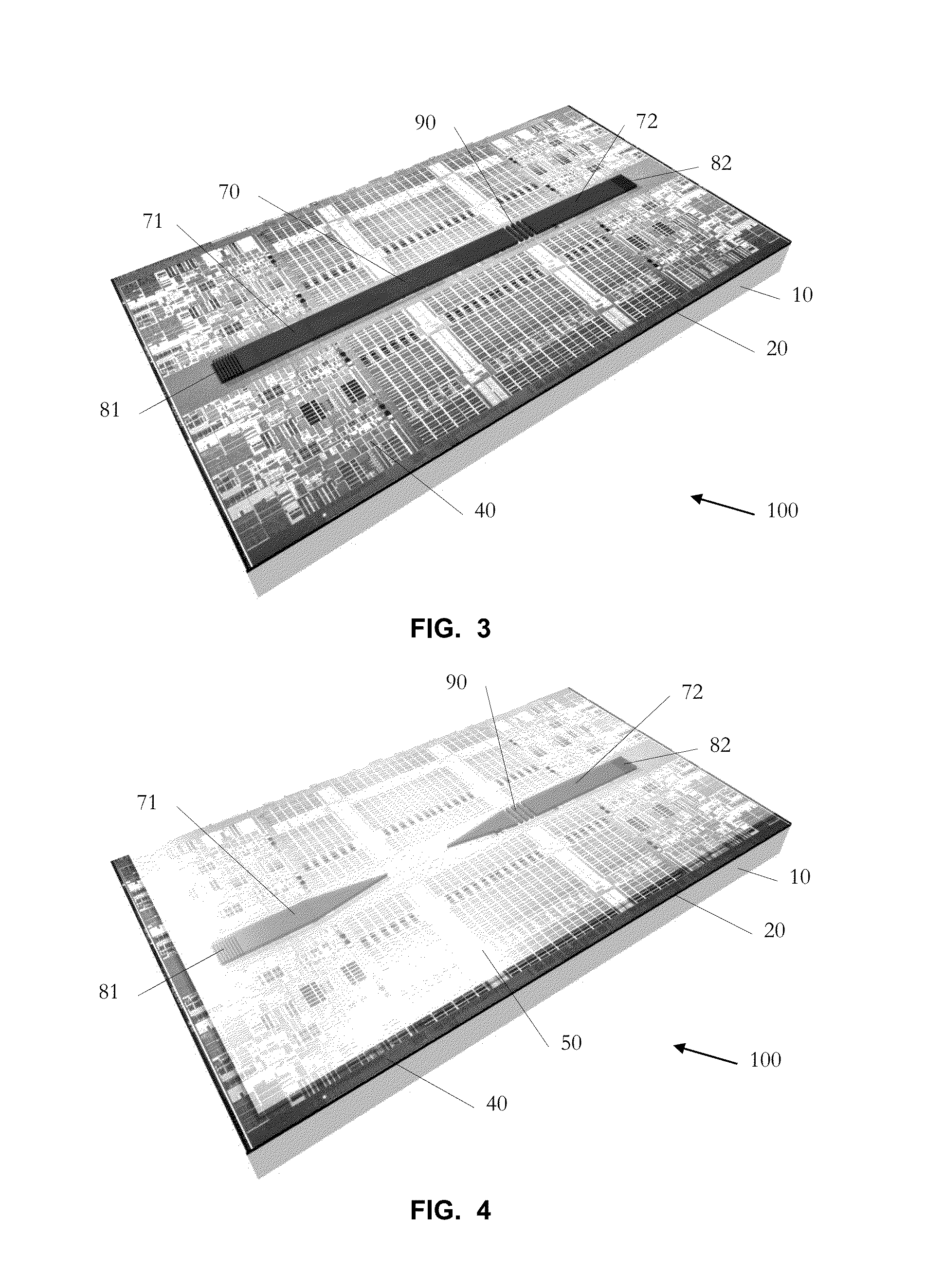Photonic circuit device with on-chip optical gain measurement structures
a photonic circuit device and optical gain technology, applied in the direction of optical radiation measurement, instruments, semiconductor lasers, etc., can solve the problems of difficult on-chip application of gain measurement, no si-based light source available, and unattractive implementation
- Summary
- Abstract
- Description
- Claims
- Application Information
AI Technical Summary
Benefits of technology
Problems solved by technology
Method used
Image
Examples
embodiments / technical implementation details
2. Specific Embodiments / Technical Implementation Details
[0071]More specific embodiments and variants thereof are now described. Such embodiments revolve around a device, which resembles a test structure for measuring the on-chip optical gain on a chip, and whose key advantages are that the gain can be measured: By using electrical pumping; By establishing two contacts only and at once; By using vertical fiber probing (thus enabling wafer-scale testing); Without facet polishing; Without fabricating and measuring numerous test structures (one device suffices); Without having to apply numerous (>2) contacts; and Without requiring high spectral resolution.
[0072]An integration scheme is disclosed, where an optically active based gain section made of Germanium, GaAs, InP, InGaAs, InAlAs, InGaAsP, NAsP, GaSb, any of their alloy, or any other suitable compound semiconductor, is evanescently coupled to a waveguide, or forms a hybrid mode with a waveguide, preferably made from silicon. This i...
PUM
 Login to View More
Login to View More Abstract
Description
Claims
Application Information
 Login to View More
Login to View More - R&D
- Intellectual Property
- Life Sciences
- Materials
- Tech Scout
- Unparalleled Data Quality
- Higher Quality Content
- 60% Fewer Hallucinations
Browse by: Latest US Patents, China's latest patents, Technical Efficacy Thesaurus, Application Domain, Technology Topic, Popular Technical Reports.
© 2025 PatSnap. All rights reserved.Legal|Privacy policy|Modern Slavery Act Transparency Statement|Sitemap|About US| Contact US: help@patsnap.com



